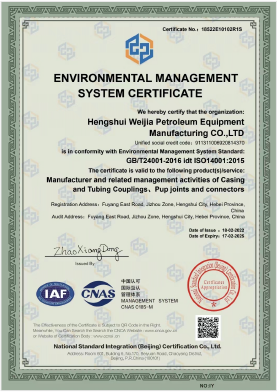- Afrikaans
- Albanian
- Amharic
- Arabic
- Armenian
- Azerbaijani
- Basque
- Belarusian
- Bengali
- Bosnian
- Bulgarian
- Catalan
- Cebuano
- Corsican
- Croatian
- Czech
- Danish
- Dutch
- English
- Esperanto
- Estonian
- Finnish
- French
- Frisian
- Galician
- Georgian
- German
- Greek
- Gujarati
- Haitian Creole
- hausa
- hawaiian
- Hebrew
- Hindi
- Miao
- Hungarian
- Icelandic
- igbo
- Indonesian
- irish
- Italian
- Japanese
- Javanese
- Kannada
- kazakh
- Khmer
- Rwandese
- Korean
- Kurdish
- Kyrgyz
- Lao
- Latin
- Latvian
- Lithuanian
- Luxembourgish
- Macedonian
- Malgashi
- Malay
- Malayalam
- Maltese
- Maori
- Marathi
- Mongolian
- Myanmar
- Nepali
- Norwegian
- Norwegian
- Occitan
- Pashto
- Persian
- Polish
- Portuguese
- Punjabi
- Romanian
- Russian
- Samoan
- Scottish Gaelic
- Serbian
- Sesotho
- Shona
- Sindhi
- Sinhala
- Slovak
- Slovenian
- Somali
- Spanish
- Sundanese
- Swahili
- Swedish
- Tagalog
- Tajik
- Tamil
- Tatar
- Telugu
- Thai
- Turkish
- Turkmen
- Ukrainian
- Urdu
- Uighur
- Uzbek
- Vietnamese
- Welsh
- Bantu
- Yiddish
- Yoruba
- Zulu
Choosing the Right Seating Nipple Tubing for Optimal Performance in Oil and Gas Applications
Understanding Seating, Nipple, and Tubing in Oil and Gas Industry
In the oil and gas industry, various components and systems work together to ensure efficient extraction and transportation of hydrocarbons. Among these essential components are seating, nipple, and tubing, which play crucial roles in the functioning of wellbores. This article will delve into each of these components, their functions, and their significance in the broader context of oil and gas extraction.
What is Tubing?
Tubing refers to the pipes used in oil and gas wells to transport hydrocarbons from the reservoir to the surface. Typically made from steel, tubing must withstand high pressures and corrosive environments. The choice of tubing is critical, as the performance and longevity of a well can depend on its quality. Tubing can come in various sizes and specifications, designed to accommodate specific flow rates and well conditions.
The primary function of tubing is to provide a pathway for the produced oil or gas. Additionally, tubing helps facilitate the injection of fluids for enhanced oil recovery, making it a vital component in both primary and secondary recovery processes. Furthermore, the design and installation of tubing must consider factors like thermal expansion, pressure changes, and the mechanical strength required to support additional equipment, such as pumps and valves.
The Role of Nipple
A nipple in the context of oil and gas tubing refers to a short length of pipe with threads at both ends. Nipples are crucial for connecting various components in the tubing string, including the tubing itself, valves, and other fittings. They serve as fittings that allow for the transition between different sizes or types of pipes, ensuring a seamless connection and maintaining the integrity of the wellbore.
seating nipple tubing

Nipples come in various configurations, including coupling nipples, which simply connect two pieces of tubing. Other types, like the crossover nipple, allow for the integration of different equipment, such as gauges or safety valves, into the system. Proper installation of nipples is essential to prevent leaks and to ensure the overall efficiency of the well operation.
Importance of Seating
Seating refers to the area where the tubing connects to the wellhead or the Christmas tree (the assembly of valves, pipes, and fittings at the surface of the well). A proper seal is crucial at this junction to prevent leaks and maintain pressure within the system. The seating must be designed to handle both the compressive and tensile forces exerted on the tubing while ensuring that the well remains sealed under pressure.
Seating elements, such as packers or seals, are often employed to secure the connection and enhance the integrity of the well system. This is especially important in high-pressure wells where any breach could lead to blowouts or loss of well control. An effective seating arrangement not only improves safety but also enhances the overall efficiency of hydrocarbon extraction.
Conclusion
In summary, the interplay of seating, nipple, and tubing is foundational to the oil and gas industry. Each component serves a distinct function, yet they must work in harmony to ensure the successful extraction and transportation of hydrocarbons. The integrity and design of each part can significantly impact the safety, efficiency, and longevity of oil and gas operations. As the industry continues to innovate and evolve with new technologies and methods, the importance of understanding these fundamental components will remain a cornerstone of effective hydrocarbon extraction and management.
-
Tubing Pup Joints: Essential Components for Oil and Gas OperationsNewsJul.10,2025
-
Pup Joints: Essential Components for Reliable Drilling OperationsNewsJul.10,2025
-
Pipe Couplings: Connecting Your World EfficientlyNewsJul.10,2025
-
Mastering Oilfield Operations with Quality Tubing and CasingNewsJul.10,2025
-
High-Quality Casing Couplings for Every NeedNewsJul.10,2025
-
Boost Your Drilling Efficiency with Premium Crossover Tools & Seating NipplesNewsJul.10,2025







